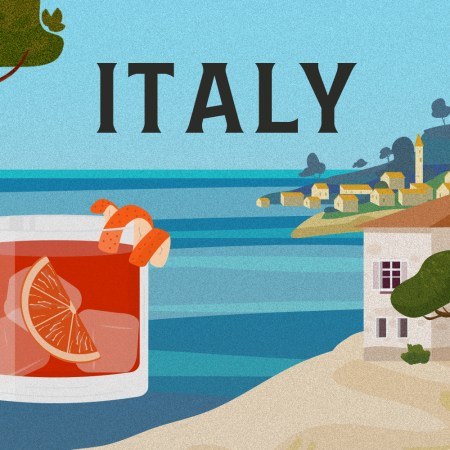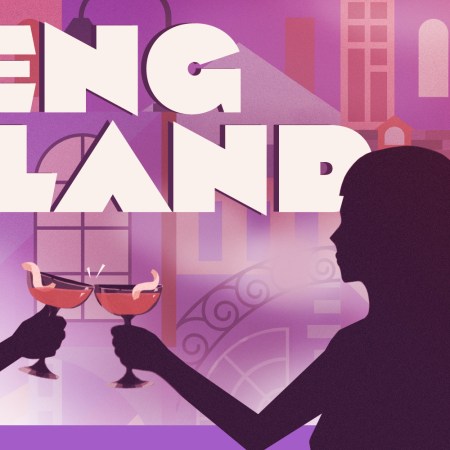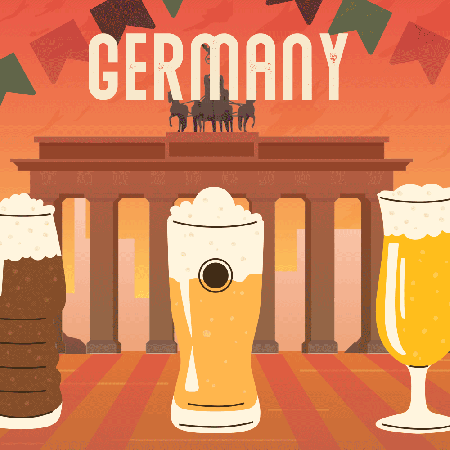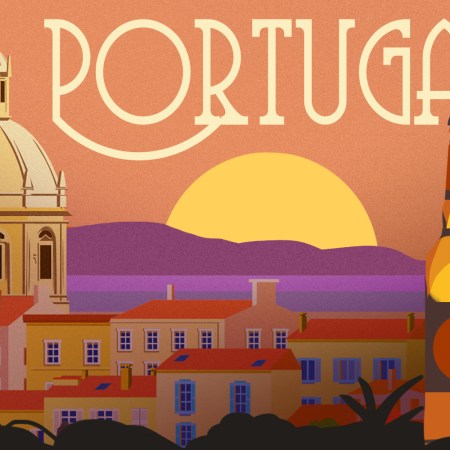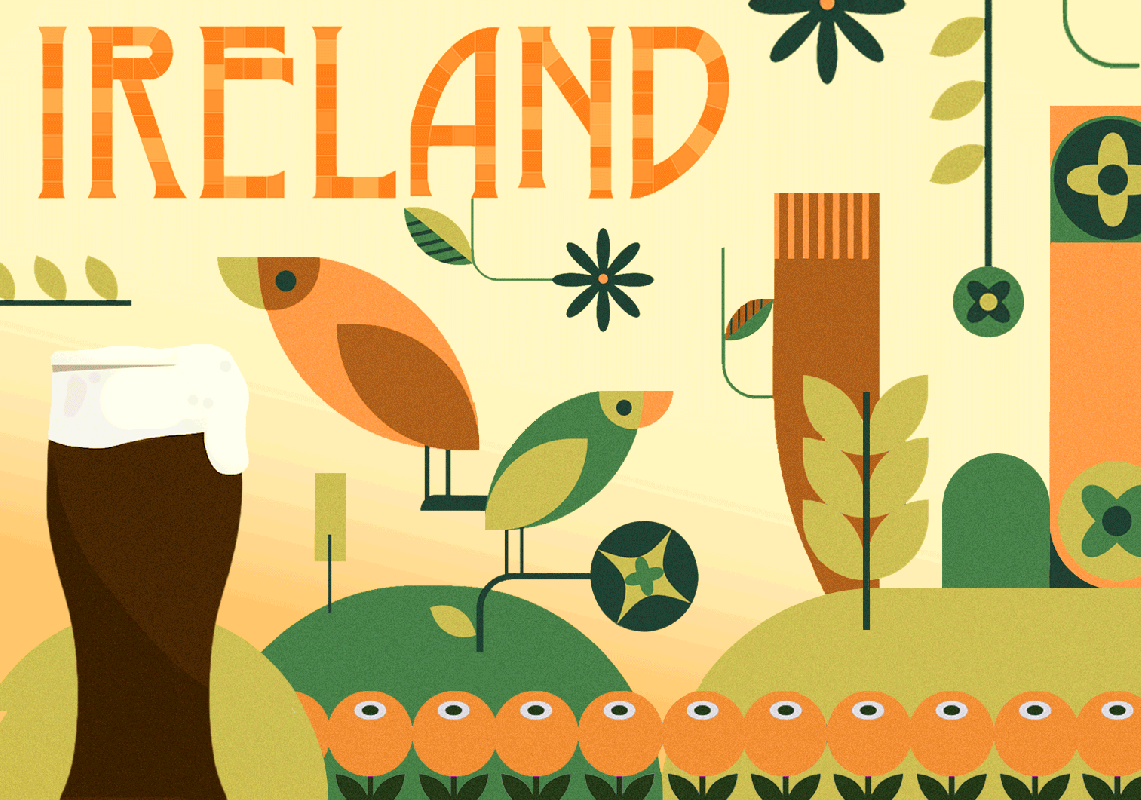
To celebrate the incredible drinking cultures of Europe, we dove deep into 10 different countries to get to know a little more about what’s in their glasses and how it got there in the first place. Click here to see them all.
My last trip to Ireland in 2022 involved 10 days where I deliberately ate some sort of meat/potato dish with a pint of Guinness and a neat pour of whatever Irish whiskey caught my attention. It was a beautiful way to experience the country, a place where any city or attraction is pretty much less than three hours away, no matter where you start. And while I certainly went off-menu a few times (for cocktails or an occasional break that involved vegetables), I mostly kept to a pretty standard, rather clichéd food and drink itinerary. But when you go to Ireland, you certainly don’t have to follow my lead.
“We’re a social nation that loves to celebrate, and when we do, we do it with style,” says Tom Murphy, a Cork native and general manager at The Doyle in Washington, D.C. “The cocktail scene in Ireland is evolving, particularly post-COVID, as more people have honed their bartending skills at home. The rise in cocktail culture complements the traditional pint culture, adding a layer of refinement to Irish drinking habits.”
But you definitely don’t have to mix booze with every meal. “The notion that the drinking culture of Ireland is all about volume is a bit outdated,” says Mike Pickford, the head mixologist at Ireland’s historic and award-winning Cashel Palace Hotel. “Nowadays, it’s more about savoring quality over quantity. There’s been a shift toward appreciating the craftsmanship behind a well-made drink, whether it’s a small-batch whiskey or an expertly crafted non-alcoholic cocktail.”
The non-alcoholic sector is growing every day, particularly amongst young adults. Per the BBC, sales of non-alcoholic beer more than tripled between 2017 and 2021, while alcohol consumption in Ireland has decreased by around 30% in the past 20 years (as of this year, there’s even a non-alcoholic pub in Dublin devoted to board games).
While pubs here are rooted in tradition and still serve as social hubs (and great places to hear music), the drinking culture of Ireland has evolved rather recently, with a resurgence in craft distilleries, a growing cocktail scene and an acceptance and appreciation of its spirits outside of the UK.

Irish Whiskey
Did the Irish invent whiskey? That’s debatable, but the first written records of whiskey in Ireland date back to 1324; and during the 19th century, Ireland was providing 60% of the world’s supply. But a variety of factors — world and civil wars, American Prohibition, the emergence of Scotch — eventually led to the closure of all but three distilleries.
Thankfully, a renewed interest in the country’s native spirit means you’ll find dozens of craft distilleries around Ireland today. “It’s a key part of our cultural heritage, and it’s celebrated for its balanced profile and diversity,” McCarthy says.
It’s hard to recommend just one Irish whiskey — Powers, Teeling, Killowen, the entire Irish Distillers lineup (from Jameson to Midleton). Just avoid Proper 12, okay?
Guinness
“It’s more than just a beer — it’s a symbol of Irish culture,” Murphy says, who notes the Guinness Storehouse in Dublin is the most visited tourist attraction in the country (it also has the finest view of the city, best enjoyed with one of the two free Guinnesses you’ll get on tour). While it no longer touts itself as good for you, this is a stout that seemingly gets a perfect, 119-second pour anywhere you go on the island.
Irish Coffee
“This is the cocktail that gave the Irish whiskey category a lifeline,” Kilbeggan Distilling Co. U.S. Brand Ambassador Michael Egan once told me. “Before that, the industry was on its knees.” The legend of the spirit’s revival starts at the Foynes Airport in midwest Ireland in 1942, where a seaplane on its way from New York to Rome ran into engine trouble and landed. A chef at the airport, Joe Sheridan, whipped up a hot drink of coffee, cream, Irish whiskey and sugar. One passenger, a San Francisco newspaper writer named Stanton Delaplane, became obsessed with this “Gaelic coffee,” and his passion eventually led to the drink’s recreation at SF’s Buena Vista Cafe a decade later. Even if the drink remains more of a U.S. staple, you can certainly find variations throughout Ireland.
Gin and Beyond
“Beyond whiskey, there’s a blossoming scene of gins (we make our own at Cashel Palace) and craft beers, each infused with local ingredients and regional pride,” Pickford says. “And the rise of non-alcoholic options has been extraordinary — people are becoming more mindful, and that’s a great step for the drinking culture of Ireland.”
Plus, the Homemade Thing
Poitín is the original Irish spirit. Somewhat akin to moonshine, it was once outlawed but has since been making a comeback. “It’s unaged, strong and known for its fiery taste,” Murphy says. “Brands like Glendalough have bottled versions that have made it more accessible.”
It’s also a family affair. “Different mash bill recipes have been shared throughout the generations and throughout the regions of Ireland,” says McCarthy, whose brand Killowen makes its own version. “Particularly within the West and Northwest, you may even still find the odd illicit still that has been running for centuries. The family poitín recipe is for the community to enjoy at key family affairs such as weddings, birthdays and the passing of loved ones.”
“During the 17th century, when Ireland was under British rule, the government tried to tax it, but their efforts failed, so the King banned it,” says Sean Muldoon, co-author of From Barley to Blarney: A Whiskey Lover’s Guide to Ireland. “However, its illegal status only made it more popular, and the spirit went underground. Since then, people, especially farmers and those living in rural areas, have orally passed down recipes from generation to generation and made poitín everywhere, from their kitchens and sheds to the woods outside.”
- St. Patrick’s Day: The most famous day associated globally with Irish culture and drinking
- Cork Jazz Festival: A massive cultural and social event
- All-Ireland Finals: This competition, dedicated to hurling and Gaelic football, brings thousands to Dublin’s Croke Park. “Win or lose, the celebrations spill out into the city,” Murphy says.
- Belfast Whiskey Week (in Northern Ireland) and Dublin Whiskey Live: Two big events celebrating Ireland’s whiskey traditions
- Matchmaking Festival: Taking place in Lisdoonvarna, County Clare. “It’s not really known outside of Ireland, but it’s the largest matchmaking event in Europe, where single people meet potential partners through dances, music and social gatherings,” Muldoon says.
Besides classics like olives and nuts (“They’re the classics that complement any drink,” Pickford says), you’ll often find local cheeses, soda bread, fish and chips, Tayto crisps (Irish potato chips), KP Salted Peanuts and, thankfully, bacon fries.
“Bacon fries are a staple, and they remind me of my childhood when I’d visit the pub with my parents,” says Murphy, a reminder that pubs in Ireland can offer more of a familial element.
It also seems like everyone has a love of toasties, or toasted sandwiches made behind the bar. Just don’t expect variety. “According to Willie Aherne, the owner of The Palace Bar in Dublin, there are only two kinds of toasties — ham and cheese or cheese and ham,” Muldoon says.

If you want a modern drinking experience, head to Dublin’s Bar 1661. “It’s dedicated to Irish spirits and delivers unforgettable cocktails,” Pickford says (we concur). If you’re wondering, the bar is named after the year poitín was outlawed in Ireland.
While in Cork, Pickford suggests Cask, which offers a creative and seasonal drinks menu. I’m personally a fan of The Shelbourne Bar, which offered me a 26-page menu of Irish whiskeys when I walked in (while also appeasing my non-whiskey-fan girlfriend with plenty of cocktail options).
There are nearly 7,000 pubs in Ireland, and everyone has their local favorite. “I recommend visiting any local in a smaller town,” says Murphy, who names Costigans, The Oval Bar, The Long Valley Bar and The Hi-B in Cork as his favorites.
McCarthy, meanwhile, suggests The Crown Liquor Saloon in Belfast and The Long Hall and The Palace Bar in Dublin. “They’re historic pubs with a more authentic atmosphere,” he says.
Finally, Muldoon says you should visit John Kavanaugh’s in Dublin, The Crown Liquor Saloon and Kelly’s Cellars in Belfast, The Spaniard in Cork, Dick Mack’s in Dingle, and Tigh Neachtain in Galway City. And for Irish whiskey fans, Celtic Whisky Bar & Larder in Killarney is a “must-see.”
The Temple Bar in Dublin is definitely for tourists. So is The Brazen Head, Dublin’s oldest pub (circa 1198), but it also has indoor and outdoor seating, live music every night, a robust Irish whiskey selection and the most Instagram-able sign in the city.
1. Always be willing to have a chat with the person next to you: “We’re a friendly bunch,” Pickford says. “Sharing stories over a drink is a big part of our culture. And don’t rush — good drinks, like good conversations, are meant to be savored.”
2. Never have an empty glass: “There’s always time for another round,” Murphy says.
3. Everything is about the craic: That’s an Irish word (pronounced crack) often used to describe a fun time. “Surround yourself with the craic — good conversation and laughter are just as important as the drink in hand,” Murphy says.
4. Try something besides Guinness and whiskey: Seriously, there’s a good cocktail scene and a lot of great gins.
5. Get your round in: “When socializing with Irish people in Ireland, it is customary for one person to go to the bar and buy drinks for everyone in the group,” Muldoon says. “This practice is known as ‘buying a round’ or ‘getting your round in.’ An outsider must be aware that the person getting the drinks is not being overly generous — it’s simply their turn, and they expect you to do the same when it’s your turn. No one will remind you when it’s your round, and if you forget, God help you, for you will be the worst person in the world and be talked about forever.”
The Railway
By Mike Pickford, head mixologist at Cashel Palace Hotel
“The Railway is a cocktail that holds a special place in my heart — it’s the creation that earned me the title of Munster Regional Champion at the Giffard West Cup 2024,” Pickford says. “What makes this cocktail unique is its use of locally-produced whiskey from our friends at the Tipperary Boutique Distillery, made from their own homegrown barley. This is a perfect balance of sweet, zesty and spicy. It not only represents a personal milestone for me but also showcases the incredible local ingredients we’re fortunate to work with.”
1.5 oz. Tipperary Homegrown Barley Whiskey
1 oz. freshly-squeezed lime juice
1 oz. egg whites
.5 oz. honey syrup
.5 oz. Giffard Ginger of the Indies Liqueur
Basil leaf, for garnish
Add all ingredients, save for the basil, to a cocktail shaker with ice. Shake all ingredients together, then remove the ice and reverse dry shake. Strain into a large chilled coupe glass and garnish with a basil leaf.

Irish Coffee
Tim Herlihy is the co-founder of Lost Irish (an Irish whiskey that’s made from casks sourced from six continents and triple distilled using all three whiskey production styles) and co-author of From Barley to Blarney: A Whiskey Lover’s Guide to Ireland with NYC’s heralded team at the Irish pub The Dead Rabbit. “The Irish Coffee has become an icon for Ireland’s favorite cocktail,” he told us awhile back.
1.5 oz. Lost Irish Irish whiskey
.5 oz. demerara syrup
3.5 oz. dark roast coffee
Thumb of prepared heavy cream (36% fat content)
Preheat a 6-ounce, heatproof glass by filling it with hot water; once warm, empty the glass. Add whiskey, simple syrup and coffee to the glass, and quickly stir to combine the ingredients. Float a thumb layer of cream over the top.
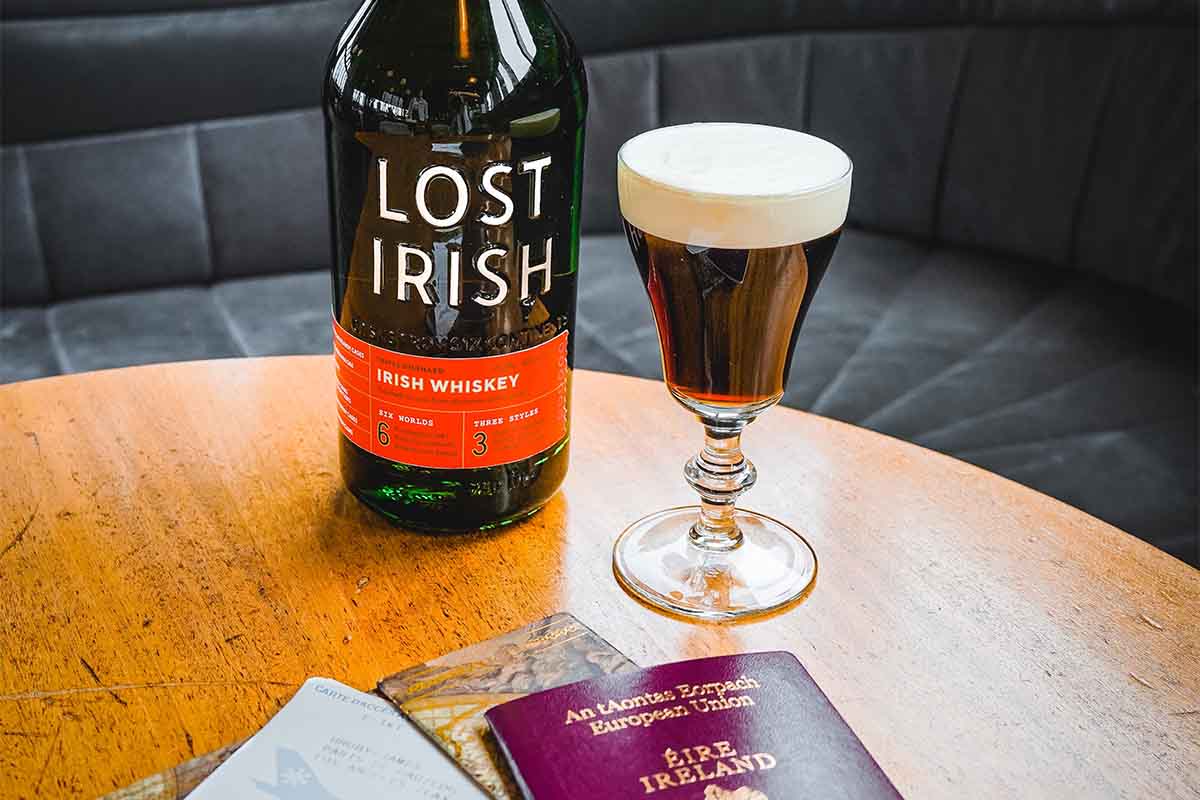
Join America's Fastest Growing Spirits Newsletter THE SPILL. Unlock all the reviews, recipes and revelry — and get 15% off award-winning La Tierra de Acre Mezcal.














